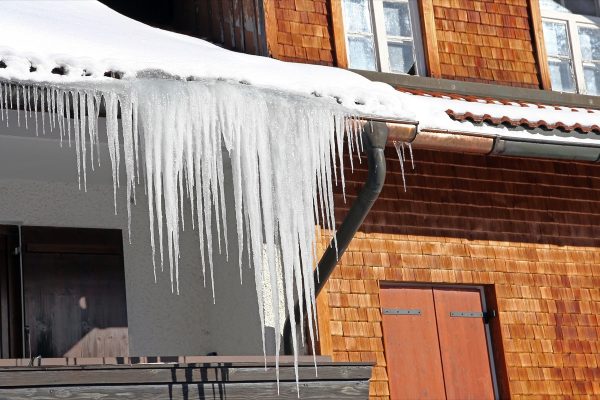Blog

In 2010, we had an extremely severe winter, and we noticed something when spring arrived. Several homeowners who hadn’t had problems in previous winters called to report leaks and damage to their roofs. What had happened? In prolonged, severe winter weather, snow accumulation can lead to ice dams and create some serious problems for your roof. But they aren’t the only type of severe weather that can compromise shingles.
Ice dams
In the winter as snow accumulates on a roof, the lower layers of the snow pack will usually slowly melt during the day. A constant runoff of meltwater comes off the roof and drains into the gutters. At night when temperatures drop, that meltwater will freeze again.
Eventually, this small-scale glacier will fill the gutter and act as a dam to the draining meltwater. With nowhere to drain, the water backs up and seeps beneath shingles, where it can breach the roof and cause leaks and damage. While gutters may make it easier for an ice dam to start, large ice dams can occur on roofs with no gutters. Winter snows, however, aren’t the only hazards your roof faces.
Sideways rain
Another way nature can compromise shingles is when horizontal wind gusts blow rain sideways. The wind can lift the front edge of the shingle and spray the rain beneath it. Like meltwater from ice dams, this can lead to damage on the exterior and interior of your house.
Shielding your roof
After a harsh winter in 2010, we researched how we could better protect roofs from extreme weather conditions. We began experimenting with a product called Grace Ice & Water Shield®. It’s a self-adhering membrane that we install between the roof and the shingle that shields the roof with two waterproofing materials: rubberized asphalt and high-density, cross-laminated polyethylene film.
Since that time, we’ve been installing Grace Ice & Water Shield® as a value-add to the roofs we replaced. A few winters later, conditions were severe enough for large ice dams to form again. This time, the following spring, we didn’t receive many calls from our clients about leaks. The shield had lived up to its name by adding an extra layer of protection of the homeowners.
This winter, before the heavy snows hit, call your trusted roofer to come and assess your roof and discuss whether an ice and water shield is a good option for your home.

Let's Talk
Get in touch to get started on your roof today. We are happy to answer any of your questions. Feel free to schedule your free roof inspection as well.
